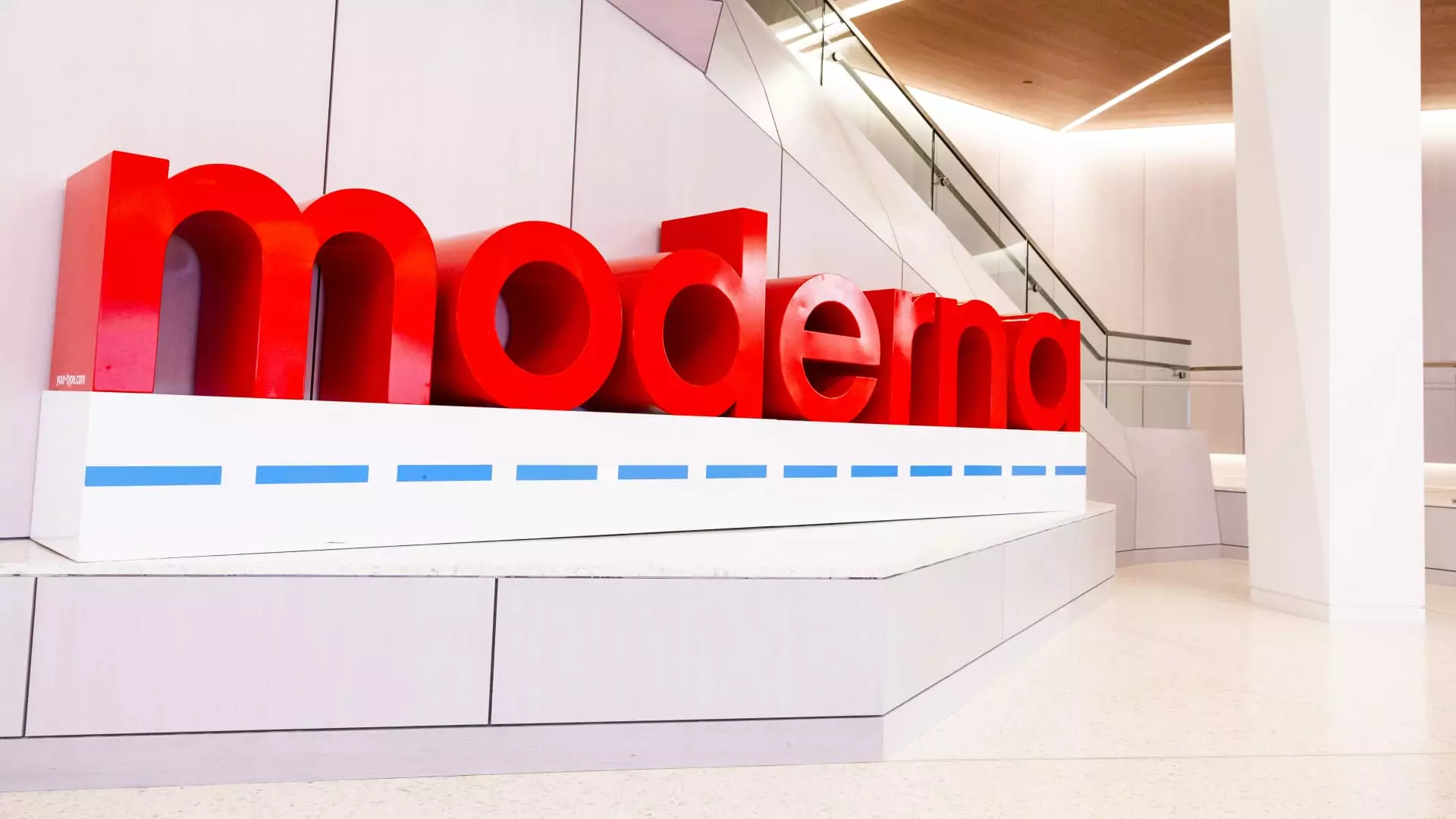On Friday, Moderna, the biotechnology firm celebrated for its pivotal role in vaccine development during the COVID-19 pandemic, revealed its financial results for the fourth quarter of 2024. While the company reported revenue that exceeded analysts’ expectations, it simultaneously posted a more significant loss than anticipated. This rapid shift captures the essence of Moderna’s current predicament, as it grapples with diminishing demand for its COVID vaccine while prioritizing cost reductions and innovation for future products. Following these results, Moderna’s shares dropped over 4% in premarket trading, underscoring investor concerns about the company’s ongoing challenges.
Moderna’s financial report indicated a staggering net loss of $1.12 billion, equating to a loss of $2.91 per share for the quarter. This contrast is stark when compared to the net income of $217 million or 55 cents per share reported in the same quarter of the previous year. A significant factor contributing to this loss was a non-cash charge of approximately $238 million tied to the termination of a contract manufacturing agreement. Despite this challenging financial backdrop, Moderna’s Chief Financial Officer, Jamey Mock, emphasized a critical achievement: the company had successfully reduced costs by 27% in comparison to the previous year.
Investors have responded with trepidation. Following a downward revision of the company’s sales guidance for 2025, which saw a decrease of around $1 billion, shares plummeted. Currently, Moderna expects sales between $1.5 billion and $2.5 billion for 2025, with most income projected in the latter half of the year.
Moderna’s revenue generation has become increasingly tenuous, as the company reported fourth-quarter sales of $966 million, a staggering decline of 66% compared to $2.8 billion recorded the same time the previous year. The majority, $923 million, stemmed from its COVID-19 vaccine, but this number reveals significant headwinds, including reduced sales in both domestic and international markets. Analysts had foreseen sales of $909 million for the vaccine within that period, but most sales shifted earlier in the year due to the FDA’s expedited approval of the latest vaccine iteration. This situation highlights the complexities and rapid changes within the pharmaceutical market, particularly as competitors enter the scene and vaccination rates fluctuate.
Moderna’s struggle to maintain international vaccine sales is symptomatic of its strategic choice to phase out advance purchase agreements with various countries, limiting potential revenue sources. Furthermore, the company’s new respiratory syncytial virus (RSV) vaccine brought in an additional $15 million, showcasing some progress but not enough to offset the drastic downturn in COVID vaccine sales.
The narrative does not end with the negative financial implications; instead, it showcases Moderna’s commitment to adaptability and innovation. The company is positioning itself to capitalize on its messenger RNA platform, which successfully powered its COVID-19 vaccine. Modern has submitted three new mRNA products for regulatory approval during the fourth quarter, which includes a next-generation COVID vaccine and a combination shot targeting COVID and the flu. With plans to add ten new products to its portfolio over the next three years, Moderna aims to diversify its offerings and rekindle growth.
However, challenges remain. The decrease in research and development expenses, though down by 20%, is seen in tandem with increased investment in other experimental products. With projections hinting at revenue expectations of just $200 million in the first half of 2025 due to seasonal fluctuations in respiratory illness demand, investors’ confidence could waver without tangible outcomes from upcoming regulatory approvals and product launches.
The current financial landscape for Moderna is a testament to the volatile nature of biotech ventures, especially in a post-pandemic world. The transition from a COVID-focused business model towards a more diversified pipeline presents both obstacles and opportunities. With strategic cost-cutting and a hopeful glance toward regulatory approvals in the coming months, Moderna’s fate largely hinges on its ability to adapt and innovate effectively. As the company confronts an ever-evolving market landscape, its trajectory will undoubtedly remain a focal point for investors, analysts, and consumers alike in the years to come.

